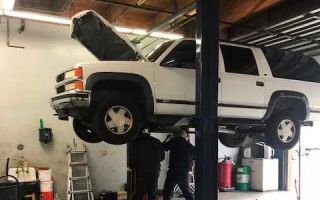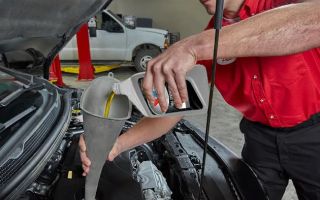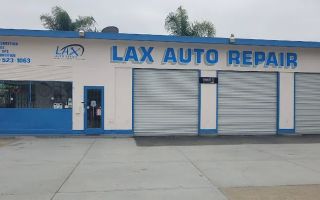Does Battery Jumpstarting Work on Electric Vehicles?
- 1. Introduction to Electric Vehicle Battery Jumpstarting
- 2. Electric Vehicles vs. Gas-Powered Vehicles: The Battery Difference
- 3. How Does Battery Jumpstarting Work?
- 4. Challenges with Jumpstarting Electric Vehicles
- 5. Alternatives to Jumpstarting Electric Vehicles
- 6. Real-Life Stories of Electric Vehicle Assistance
- 7. Choosing Rescue & Towing for Your Electric Vehicle Needs
1. Introduction to Electric Vehicle Battery Jumpstarting
Electric vehicles (EVs) are revolutionizing the way we think about transportation, offering eco-friendly alternatives to traditional gas-powered cars. However, like any vehicle, EVs are not immune to battery-related issues. One common question that arises for EV owners is whether battery jumpstarting, a technique used for traditional vehicles, works for electric vehicles. In this article, we'll explore the concept of jumpstarting, how it applies to electric vehicles, and what to do if you encounter a dead battery while driving an EV.
As electric vehicles become more popular, the need for reliable services to assist with emergencies such as dead batteries is growing. Understanding how to handle such situations, especially if you're driving in remote locations, is essential. While traditional jumpstarting techniques may work for gasoline-powered cars, the situation for electric vehicles can be quite different.
2. Electric Vehicles vs. Gas-Powered Vehicles: The Battery Difference
The main difference between electric vehicles and traditional gas-powered vehicles lies in their power source. Gas-powered cars use an internal combustion engine (ICE) that requires a battery to start the vehicle. These batteries are typically smaller and are used mainly to power the vehicle’s electrical systems (like lights, radio, etc.) until the engine kicks in. On the other hand, electric vehicles rely entirely on large lithium-ion batteries to power the vehicle's motor, meaning their batteries are crucial for both movement and electrical functions.
This distinction becomes important when considering the feasibility of jumpstarting an EV. For traditional cars, jumpstarting involves using a charged battery from another vehicle to provide a quick boost of power to the dead battery. However, in electric vehicles, the large and complex battery systems make a direct jumpstart much more complicated, if not impossible in some cases.
Understanding the type of battery and its role in the operation of your electric vehicle is essential before attempting any troubleshooting or assistance. The battery in an EV isn’t just an accessory; it’s the core of the vehicle's power system.
3. How Does Battery Jumpstarting Work?
For traditional vehicles, battery jumpstarting involves connecting the dead vehicle’s battery to a fully charged battery of another vehicle using jumper cables. This process transfers electricity from the working battery to the dead battery, providing just enough power to start the engine. Once the engine starts, the alternator in the vehicle recharges the battery, restoring it to full power.
While this technique is effective for gas-powered cars, electric vehicles do not use an alternator to recharge their battery systems. As a result, jumpstarting methods commonly used in traditional vehicles are not applicable to electric vehicles. EV batteries are designed for longer-term use and generally require more significant amounts of energy to recharge.
Instead of jumpstarting, EV owners must rely on specialized equipment or services when faced with a dead battery. This can include charging stations, roadside assistance, or even a specialized tow to a nearby charging station or service center.
4. Challenges with Jumpstarting Electric Vehicles
Electric vehicles come with unique challenges when it comes to battery maintenance and emergency services. Here are the key factors that make jumpstarting EVs difficult:
- Battery Complexity: The large battery pack in an EV is not the same as a standard 12-volt car battery, which is used in conventional gas vehicles. EV batteries are complex and connected to the vehicle’s power systems, requiring specialized knowledge to safely handle and recharge.
- Risk of Damage: Attempting to jumpstart an electric vehicle incorrectly can cause damage to the battery system or even the entire electrical system of the car. This could lead to costly repairs or, in the worst case, render the vehicle inoperable.
- Charging Infrastructure: Many EVs rely on access to public charging stations or home charging setups. If you're stranded with a dead battery, accessing a charging station is often the fastest and safest way to get back on the road.
- Limited Emergency Services: While traditional vehicles often have roadside assistance services equipped to jumpstart a car, many emergency tow companies are still adapting to the unique needs of electric vehicles. Therefore, having a reliable service provider with EV experience is critical.
Because of these challenges, it's essential to know when to seek professional assistance rather than attempting a potentially damaging DIY fix.
5. Alternatives to Jumpstarting Electric Vehicles
While jumpstarting is not recommended for electric vehicles, there are several alternatives to help you get your EV back on the road:
- Roadside Assistance Services: Many EV owners benefit from enrolling in roadside assistance services that offer specialized support for electric vehicles. These services can help with recharging the vehicle’s battery at the scene or provide a tow to the nearest charging station.
- Portable EV Chargers: Portable EV chargers are available for emergencies and can provide a quick top-up of power to allow your EV to reach the nearest charging station. These chargers are often available for purchase and can be a valuable tool for frequent EV drivers.
- Public Charging Stations: If your EV runs out of charge, the most effective solution is often to find a nearby public charging station. Apps and EV maps can help you locate stations, many of which offer fast-charging options for a quick fix.
Understanding these alternatives can help you stay prepared in case of a low battery emergency while driving your EV.
6. Real-Life Stories of Electric Vehicle Assistance
Many electric vehicle owners have shared their experiences with roadside assistance during a low-battery emergency. One story involves an EV owner who found themselves stranded on a highway with a dead battery. Fortunately, their roadside assistance service provided a portable charging solution, enabling them to charge their battery enough to reach the nearest charging station without having to tow the vehicle.
In another case, a driver was able to use an emergency tow service that specializes in EVs, which took the car to a local charging station. These stories emphasize the importance of having access to specialized services for EVs, as conventional towing services are often not equipped for handling electric vehicles with low batteries.
7. Choosing Rescue & Towing for Your Electric Vehicle Needs
If you’re an electric vehicle owner, it's important to have a reliable towing and roadside assistance provider that understands the unique needs of EVs. At Rescue & Towing, we specialize in emergency towing and roadside assistance for all types of vehicles, including electric vehicles. Our team is trained to handle EVs safely, ensuring that your vehicle gets the help it needs quickly and efficiently.
Whether you're looking for a jumpstart alternative or need towing to a nearby charging station, Rescue & Towing is here to provide expert support for your electric vehicle. Visit our website today to learn more about our services and to schedule an appointment!


























